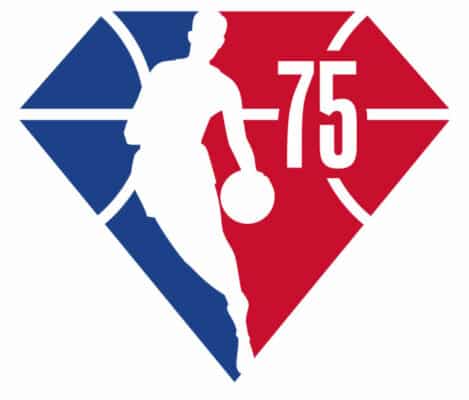
*He may not be as well known as LeBron James, Michael Jordan, or Kobe Bryant, but Ossie Schectman’s place in NBA history is just as prominent.
After all, it was Schectman, a basketball player for the original New York Knicks, who used an underhand layup in a game at the Toronto Huskies on November 1, 1946, to score the first two points in the league’s history. The kicker is there was no NBA at that time. Only the Basketball Association of America (BAA), which wasn’t called the NBA until three years later.
The trip in time is one of many the Associated Press takes readers via written word and pictures as it examines the history of the National Basketball Association (NBA). The series comes as the league celebrates 75 years since its 1946 debut.
MORE NEWS ON EURWEB: Here’s How to Watch Today’s 2022 NBA All-Star Game | VIDEOs
As the Basketball Association of America, the future NBA started out with 11 teams and 160 players, who were all white. Black players didn’t come into the league until integration came into play in the 1950s. Before the arrival of black players, the BAA opened the door to diversity with the drafting of Wat Misaka, a Japanese-American player who played for the Knicks in 1947.
Despite the major development of Misaka’s presence on the court, the drafting barely got noticed. Misaka only played three games.
Contrary to today’s NBA, teams in the early years struggled. Lots of money was lost, with some teams calling it a day after season 1. By the start of season 2, four of the league’s 11 original teams folded as it added a team from Baltimore and played with eight teams for the second season.
In addition, the NBA took steps to save money on travel by reducing its 60-game schedule to 48, the AP stated
In 1949, things changed, with the BAA upping its team count to 17 teams, which were turning a profit as the BAA’s rebranding to the NBA was complete. Who’d have thought the NBA and it’s players would eventually evolve into becoming the force that it is, on and off the court.
“None of us who were playing at that time knew what this would be,” Schectman said in a 2010 interview, three years before his death. “We didn’t know if this was going to work out and become something.”
Needless to say, the NBA became something, with 30 teams worth possibly much more than the $100 billion combined worth of the teams. The league has a fan base that stretches to each corner of the globe and a reputation of being a leader when it comes to social issues.
Look no further than James, who has led the way as one of the NBA’s finest, who is taking a stand on causes near and dear to them. James himself has spearheaded a voting right and registration drive that played a significant role in the 2020 presidential election. In addition to voting rights and registration, NBA players have made themselves known in recent years with commitments to ignite change. Combined with additional and almost unprecedented levels of support for historically Black colleges and universities.
Sharing his view on the NBA as a platform for change, Richard Lapchick, the son of former New York Knicks coach Joe Lapchick, stated the league’s platform has always provided an opportunity to be a conduit for change — perhaps never more so than now.
“I genuinely believe that the NBA, with Adam Silver as its current leader, is in this for the right reasons and has the support of the largest integrated labor force in America in terms of percentage of the population,” Lapchick, a researcher on social and racial issues within sport told the AP. “They’re also very wealthy, so they can use their resources — and this is new — to invest in social justice campaigns in their communities.”
For more on the Associated Press’ NBA at 75 series, click here.
We Publish News 24/7. Don’t Miss A Story. Click HERE to SUBSCRIBE to Our Newsletter Now!





